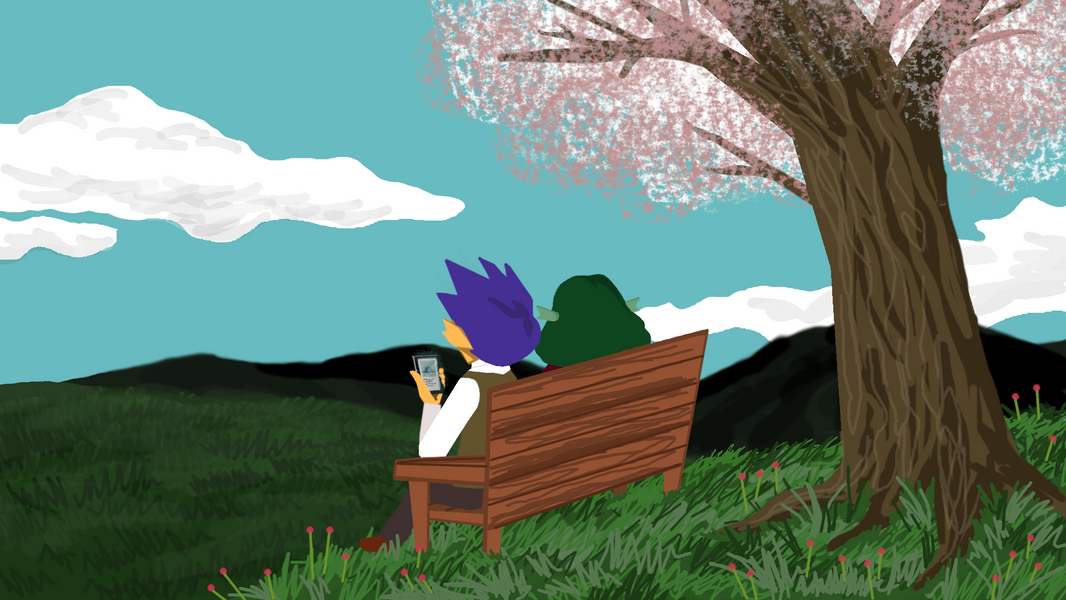 |  |  |
|---|---|---|
 |  |  |
TAKE FLIGHT
Exhibited in Ruffin (March 2022)
Driving down the New Jersey Turnpike, Shelby Lawton noticed clouds that looked beautiful against the clear blue sky. But then she realized something: they were actually plumes of steam from an oil refinery.
That experience encourages her research into the wider environmental effects of those refineries, such as their harmful effects on birds like the Clapper Rail, one of the many species who suffered from the BP oil spill in the Gulf of Mexico back in 2010. This work, Take Flight, used the motif of flight to depict some of those other species who have been affected, from the Heron to the Snowy Piper, as they attempt to fly away from the refinery while remaining trapped within its plumes of steam.
Lawton strung up cut outs of penned bird sketches and projected overtop of them various digital paintings and frame by frame animations. She used small proportions and muted color to both distinguish the refinery projection from the rest of the work and to ensure that the viewer only noticed it towards the end. That way, Take Flight could mimic and recapitulate her own encounter with the clouds turned steam. She also aimed to use the interplay of shadows to create a layering effect. Such layering created depth to the work but more importantly added to the visual sense of accumulation, of the quantity of species affected and the interconnectedness of ecosystems.
The experience of creating the work was incredibly rewarding. Lawton was able to translate a personal experience for an audience, and then connect it with larger environmental issues. Her work was able to illustrate that the decisions humanity makes now have much wider effects on the rest of the world's future.
Funded by: UVA Repair Lab Grant
Software and Material Used: Adobe Suite, Projectors, Micca Specks, and USBs
ARCTIC VEGETATION AND PERMAFROST
Supervised Research at UVA (Sep 2021- May 2022)
Shelby Lawton worked closely with UVA researchers and ecologists, Dr. Epstein, Dr. Armstrong, and Ms. Heffernan to create graphic designs and animations depicting NASA-funded research.
The first graphic she worked on gave an overview of the ecological processes commonly found in arctic vegetation models. This work was presented at the NASA ABoVE All Science team meeting, and it will be published in an upcoming review article to serve as a visual guide for the models described in it.
The animation Lawton worked on was for illustrating data Dr. Armstrong collected from a SIBBORK (arctic vegetation) model. It shows how certain tree species grow over time in a plot in Alaska. There was an additional animation created to show how fire can affect permafrost depth. This animation was also shown at the NASA ABoVE All Science Team meeting.
The last graphic she worked on depicted permafrost depth in Alaska. Dr. Epstein used this graphic to demonstrate what ice troughs look like, and how people impact the permafrost's depth, such as how layering gravel can help maintain permafrost, while roads increase its depth from the surface.
Software Used: Adobe Suite
HPV: THE IMPORTANCE OF VACCINATION
Project Lead for Infectious Disease in 3D (August 2021 - May 2022)
Lawton helped create a virtual reality film educating on the importance of HPV vaccination. She created a series of images used for the storyboard, and which were later incorporated into presentations and an animatic for the project.
Software Used: Adobe Suite
SPLICED
New Media Project (2021)
In 2019, the first human child was genetically modified to be resistant to HIV. But even though humanity can manipulate DNA, that does not necessarily mean it should be done. There are especially concerns with what other applications humans might apply genetic engineering for.
In Spliced, the main topic that this short film addresses is beauty, and how gene-editing might be used to achieve that ideal. The story itself involves the existence of an alternate reality where a couple selects how they want their child to appear, but at a cost.
Software Used: Adobe Suite and GIMP















